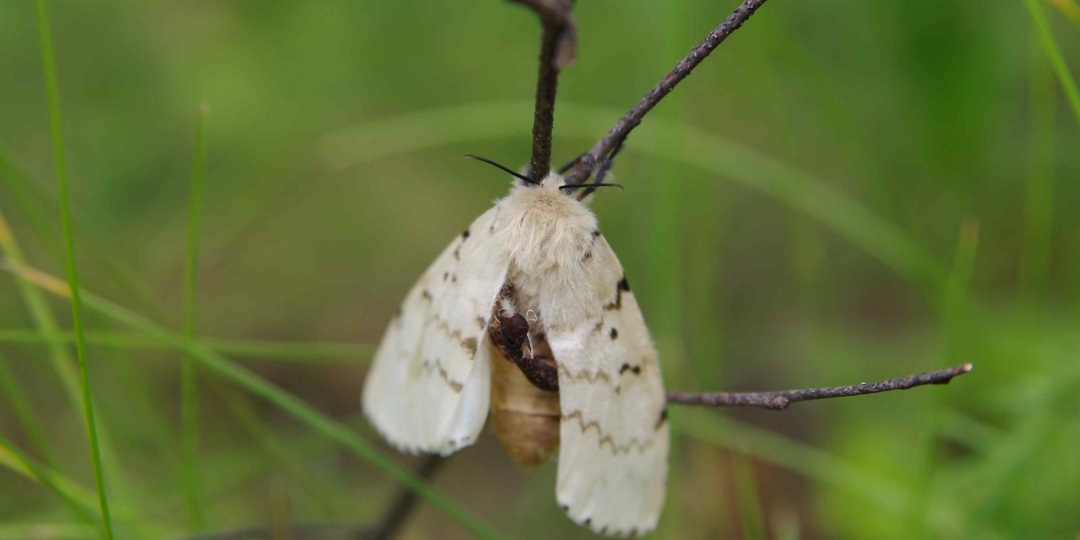What are Gypsy/Spongy Moths, and How Can You Protect Your Trees from Them?
Pest infestations can be huge problems for trees, especially Gypsy/spongy moths. No, spongy moths aren’t flying around with miniature sponges to give your tree a good wash. In fact, they can cause damage to your trees throughout almost every stage of their life, from egg to caterpillar to adult moth. So, exactly what are spongy moths, and how can you protect your trees from them? The Monster Tree Service team explains what spongy moths are, spongy moth damage signs to look out for, and three ways to protect your trees from spongy moths.
What are Spongy Moths?
Formerly known as “gypsy moth,” the Entomological Society of America officially renamed Lymantria dispar “spongy moth” in early 2022. Spongy moths get their new name from the eggs they leave on trees, which resemble spongy masses. The invasive species is native to Eurasia and was intentionally brought to the United States in the 1800s to breed silkworms. However, they quickly escaped production facilities and multiplied. Spongy moths tend to lay eggs in clusters on tree branches. When the eggs hatch, hairy dark brown caterpillars with red spots emerge to feast on tree leaves. If you see a group of caterpillars on a tree, chances are they’re spongy moths. Once matured, spongy moths have fuzzy bodies, triangular brown or white wings, and feathery antennae.
What are the Signs of Spongy Moth Tree Damage?
Spongy moths won’t leave a trail of brightly colored dish sponges, but they will leave other warning signs. Here are the indicators of spongy moth tree damage to look out for when examining your tree.
Presence of full-grown spongy months on or around the tree
Clusters of caterpillars on tree trunks or branches
Spongy looking eggs clinging to tree trunks or under large branches
Partially chewed leaves
Large sections of missing leaves
Signs of other pest infestations
If you believe your tree shows signs of spongy moth damage, but you don’t see any eggs, caterpillars, or moths, consult an arborist to determine if something else might be damaging your tree.
Top 3 Ways to Protect Your Trees from Spongy Moths
Here are three ways to protect your trees from spongy moth infestations.
#1 Tree Banding
One of the best ways to trap and kill spongy moths is through tree banding. Tree banding involves tying a strip of burlap or similar material four to five feet up the tree trunk before or shortly after spongy moth eggs have hatched. Next, spread a sticky substance over the material's surface, like petroleum jelly, tanglefoot, or other tacky-like glue or insect trap. The newly hatched caterpillars will cross the sticky burlap and become trapped before reaching the tree canopy. Once captured, you can remove the caterpillars and soak them in soapy water to kill them. Don’t let caterpillars fall to the ground, as they can return to the tree.
#2 Remove Eggs
If you find eggs early enough in the season, you can remove them from your tree before they hatch. Spongy moth eggs look like spongy masses and attach to tree trunks and branches. Carefully scrape the eggs off the surface and soak them in soapy water to kill them. You can also use horticultural or mineral oil to remove and destroy the eggs. Do not crush eggs or leave fallen eggs on the ground, as they can spread and hatch later on.
#3 Treatments
Finally, you can use different treatments to kill spongy moth caterpillar infestations. While they will kill spongy moths, they can also harm natural predators and bugs beneficial to your trees. We recommend enlisting the help of a certified arborist trained in spongy moth treatments to keep your yard and family protected from the pests.
Keep Your Tree Free from Spongy Moths (and Other Pesky Pests)
If you’re ready to throw in the sponge on your at-home spongy moth remedies, don’t fret. Contact the expert tree and plant health care experts at your local Monster Tree Service today. We offer insect and disease management services so you can keep your trees happy, healthy, and pest-free.
Find other resources here.

